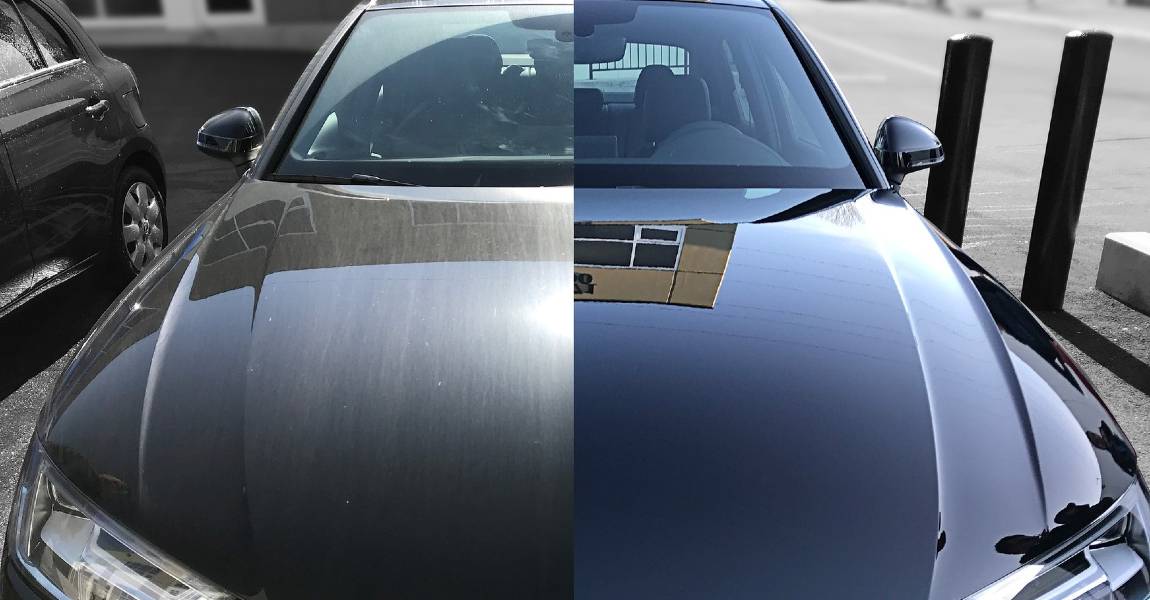Choose premium auto detailing for a high-end interior and exterior cleaning.
Choose premium auto detailing for a high-end interior and exterior cleaning.
Blog Article
A Comprehensive Guide to the Types of Ceramic Covering on the Market
Ceramic layers have emerged as a crucial service across different sectors due to their distinct residential or commercial properties and applications. As we explore the distinct qualities and applications of these coverings, the ramifications for performance and longevity end up being progressively noticeable, elevating inquiries concerning which kind could ideal suit your requirements.
Recognizing Ceramic Coatings
Ceramic coatings are advanced safety remedies that have actually obtained appeal in different markets, especially in automobile and aerospace applications. These coatings contain a liquid polymer that, when treated, creates a long lasting, hydrophobic layer on the surface area of the substratum. This layer offers boosted resistance to environmental pollutants, UV radiation, and chemical exposure, thereby prolonging the life and visual charm of the underlying material.
The fundamental component of ceramic finishings is silica, which adds to their firmness and durability. The application procedure normally entails surface area prep work, application of the finish, and treating, which can be achieved via heat or UV light. When treated, ceramic layers exhibit extraordinary bonding properties, permitting them to adhere highly to a range of surfaces, consisting of metals, plastics, and glass.
In addition to their safety features, ceramic layers likewise offer convenience of upkeep. Their hydrophobic nature minimizes the adherence of dirt and gunk, making cleaning easier and much less frequent. Overall, the fostering of ceramic layers represents a substantial improvement in surface security innovation, offering both useful and aesthetic advantages throughout numerous markets.
Sorts Of Ceramic Coatings
Different kinds of ceramic finishes are available, each created to fulfill particular efficiency requirements and applications - scratch repair sarasota. One of the most typical types consist of:
Silica-based Coatings: These coverings primarily contain silicon dioxide and are known for their resilience and chemical resistance. They are extensively used in vehicle and industrial applications.
Titanium Dioxide Coatings: Prominent for their photocatalytic buildings, titanium dioxide finishings are frequently applied in atmospheres where self-cleaning and antifungal homes are desirable, such as in building products and automobile finishes.
Zirconia Coatings: Characterized by their high-temperature stability and thermal resistance, zirconia coverings are used in applications such as wind turbine engines and high-performance automotive components.
Alumina Coatings: Showing excellent hardness and thermal security, alumina finishes are frequently utilized in wear-resistant applications, including cutting tools and commercial equipment. - Car Detailing
Hybrid Coatings: Integrating the homes of different materials, crossbreed finishings provide boosted performance qualities, making them suitable for one-of-a-kind and requiring applications.
Each kind of ceramic finishing serves distinctive objectives, permitting users to pick the most suitable remedy based on details environmental problems and performance requirements.
Benefits of Ceramic Coatings
Coatings play an essential duty in improving the efficiency and durability of surfaces throughout various sectors. Ceramic layers, specifically, offer numerous advantages that make them significantly popular among producers and customers alike. One of the key benefits is their exceptional longevity. These layers are resistant to scrapes, chemicals, and UV rays, guaranteeing that the underlying surface area continues to be safeguarded gradually.
In enhancement to durability, ceramic layers give superb hydrophobic buildings, enabling simple cleaning and upkeep. This water-repellent nature decreases the adherence of dust, crud, and various other impurities, which can lengthen the visual allure and capability of the surface. Furthermore, ceramic finishings can significantly enhance thermal resistance, making them excellent for applications that sustain heats.

Application Process
When applying ceramic coatings, a careful approach is vital to achieve ideal outcomes. A clean surface makes certain proper attachment of the finish.
When the surface area is prepped, the following step is to apply the ceramic finishing. The layer ought to be used in thin layers, as thicker applications can lead to unequal finishes.
After application, the finishing needs a certain curing time, typically ranging from a couple of hours to a complete day, relying on the product. During this moment, it is important to avoid exposure to moisture or pollutants. Lastly, a gentle buffing may be required after treating to improve the gloss and eliminate any kind of high places. Adhering to these steps vigilantly will optimize the performance and longevity of the ceramic covering, offering a resilient safety layer for the surface.
Maintenance and Longevity
To make sure the durability and effectiveness of a ceramic coating, regular maintenance Learn More is necessary. Ceramic coverings, understood for their toughness and safety qualities, need specific care regimens to maximize their life expectancy and performance.
In enhancement to normal washing, routine evaluations are essential. Look for indicators of wear or damage, such as hydrophobic residential properties lessening or surface imperfections. If essential, a light gloss may be applied to revitalize the finish without removing it away.
Furthermore, the application of a booster spray can enhance the finishing's hydrophobic impacts and recover its gloss. This is specifically beneficial for finishes that have actually remained in use for a prolonged duration. Ultimately, by adhering to these maintenance methods, one can substantially expand the life of a ceramic coating, guaranteeing that it continues to supply optimum protection against ecological variables and maintain the aesthetic appeal of the automobile.
Conclusion

Report this page